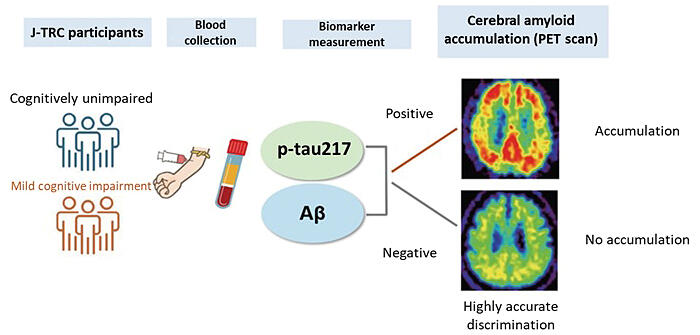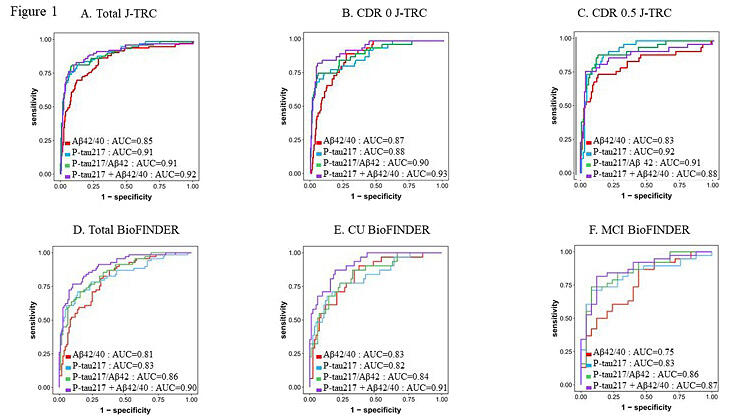On May 23, a research group led by researchers from the University of Tokyo announced their research results showing that a blood test for measurement/analysis of two different proteins believed to cause Alzheimer's disease, which accounts for more than half of all cases of dementia, can accurately predict the onset of the disease. This is the first large-scale empirical study in Japanese individuals and is expected to contribute to early diagnosis and treatment of dementia.
In Alzheimer's disease, first a protein called amyloid beta (β) and then another called phosphorylated tau 217 accumulate in the brain. Alzheimer's disease is believed to develop when nerve cells gradually break down and the brain shrinks. Amyloid-β, in particular, is known to accumulate well before disease onset.

Prepared by Professor Takeshi Ikeuchi of Niigata University, and provided by Professor Takeshi Iwatsubo of the University of Tokyo
The new drug "lecanemab," launched last year, is an artificially created antibody that prevents the destruction of nerve cells by binding to amyloid-β before it hardens. The drug is administered to treat people with mild dementia or mild cognitive impairment (MCI) in whom amyloid-β has accumulated, which should be confirmed through PET or cerebrospinal fluid testing. These tests are available only at a limited number of medical facilities and pose moderate-to-high levels of physical burden on elderly people.
The research group, led by Professor Takeshi Iwatsubo and Project Associate Professor Yoshiki Niimi of the University of Tokyo Graduate School of Medicine, collected blood samples from 474 Japanese people diagnosed as being in the MCI or "preclinical stage," an asymptomatic, prodromal period to the onset. Amyloid β and tau in the blood were measured as indicators of biomarkers. Following this, they examined how close the new test method combining measurement results with clinical data is to actual PET results, that is, how well it can predict the PET results. As a result, a comparative analysis of the index, of which a value closer to 1 means that the result is closer to the PET scan, showed "0.85" for amyloid β and "0.91" for tau, indicating that the test results were precisely concordant with the actual imaging diagnosis by PET. The accuracy was further enhanced when the measurements of the two proteins were combined.

Provided by Professor Takeshi Iwatsubo of the University of Tokyo
Iwatsubo and his colleagues in the research group commented, "We found that the combination of amyloid-β and tau biomarkers can predict amyloid-β accumulation in the brain at the very early stage of Alzheimer's disease with high accuracy." They added, "Moving forward, we will demonstrate that simple clinical diagnosis combined with blood biomarker testing can efficiently diagnose Alzheimer's disease at the preclinical and other pre-onset stages, and during the MCI stage, and facilitate early prevention and treatment.
Alzheimer's disease is estimated to account for 60%−70% of all dementia. According to the latest estimate of overall dementia released on May 8 by a research group of the Ministry of Health, Labor, and Welfare, there will be 4.71 million people with dementia in 2025. Furthermore, in 2040, 5.84 million people will be living with dementia, and the number of people in the MCI stage will reach 6.13 million.
The research was supported by the Japan Agency for Medical Research and Development (AMED), and the paper was published in the international journal Alzheimer's Research and Therapy on May 23.

Provided by the Japan National Press Club
Original article was provided by the Science Portal and has been translated by Science Japan.




